All issues

Volume 44 (2011)
- Issue 3 Pages 107-
- Issue 2 Pages 65-
- Issue 1 Pages 1-
- Issue Supplement Page・・・
Volume 44, Issue 2
Displaying 1-3 of 3 articles from this issue
- |<
- <
- 1
- >
- >|
The original
-
Junko OHISHI, Toshinobu SAKAI, Guoeng QU2011Volume 44Issue 2 Pages 65-81
Published: December 26, 2011
Released on J-STAGE: December 26, 2012
JOURNAL FREE ACCESS -
Eiji FUJITA, Hatsuyuki HAMADA, Kazuyuki OYAMADA, Hiroyuki NOGUCHI, Mor ...2011Volume 44Issue 2 Pages 83-91
Published: December 26, 2011
Released on J-STAGE: December 26, 2012
JOURNAL FREE ACCESSThe present study aimed to examine the activity levels of quadriceps femoris muscle during Uchikomi movement (a practice for throwing) of Seoi-Nage (shoulder throw) in college judo players and would be effective for elementary school judo players with low muscle strength as a resistance exercise for the quadriceps femoris. The subjects were six male members of the college Judo Club. In this study, electromyogram (EMG) were obtained from college judo players who could correctly repeated the Uchikomi movement to precisely estimate the level of muscle activity in the quadriceps femoris during individual tasks. The EMG activities of the rectus femoris (RF) and vastus lateralis (VL) muscles during Uchikomi movement of Seoi-Nage, Osoto-Gari (outer leg reap), and body mass-based parallel squat task as well as isometric maximal voluntary knee extension were recorded. The rectified EMG signals during the Uchikomi movement and squat tasks were averaged and normalized as the relative value (%EMGmax) to that during isometric maximal voluntary knee extension task. The %EMGmax values for RF and VL were averaged and used as an index representing the level of muscular activities of quadriceps femoris (QF %EMGmax) during the task movements. As a result, the QF %EMGmax during Seoi-Nage, Osoto-Gari, and parallel squat were 43.2 ± 14.8%, 25.5 ± 10.3%, and 28.6 ± 7.1%, respectively. The QF %EMGmax in the Seoi-Nage was significantly higher than in the parallel squat and in the Osoto-Gari (P < 0.05). This result demonstrate that the activity levels of quadriceps femoris during Seoi-Nage was approximate 1.5 times that during parallel squat; a general resistance exercise of the leg. The current results indicate that the Uchikomi movement of Seoi-Nage would be a resistance exercise that could strengthen the quadriceps femoris equally or more than body-mass based parallel squat in college judo players. And it may be applied to elementary school judo players with low muscle strength.View full abstractDownload PDF (561K) -
Takeru SATO, Katsuyuki MASUCHI, Jun KONNO, Shin-ichiro SATO, Tomochika ...2011Volume 44Issue 2 Pages 93-99
Published: December 26, 2011
Released on J-STAGE: December 26, 2012
JOURNAL FREE ACCESSThe purpose of this study was to examine the relation between isokinetic trunk strength and competitive ability in collegiate heavyweight judoka (judo athletes). Twenty-five male collegiate judoka in the heavyweight category participated in this study. The subjects were divided into three groups of high, middle and low competitive ability, as determined by the five coaches of the judo teams to which the subjects belong and by a former All Japan Judo Federation coach. We measured the peak torque during trunk extension and flexion using the CYBEX 770-Norm dynamometer system. Peak torque was measured at angle velocities of 30, 60, 90, 120 and 150 degree/s.
The following results were obtained.
1) The rank correlation coefficient between trunk extension torque at 120 degree/s and competitive ability was 0.762 (P < 0.05) in the high-ranking group.
2) The rank correlation coefficient between trunk extension torque at 150 degree/s and competitive ability was 0.905 (P < 0.01) in the high-ranking group.
These results suggest that demonstrating trunk extension strength during rapid movement relates to competitive ability in collegiate heavyweight judoka with higher competitive ability. We consider that enhancing trunk extension strength during rapid movement is effective in strengthening competitive ability in collegiate heavyweight judoka with higher competitive ability.View full abstractDownload PDF (451K)
- |<
- <
- 1
- >
- >|